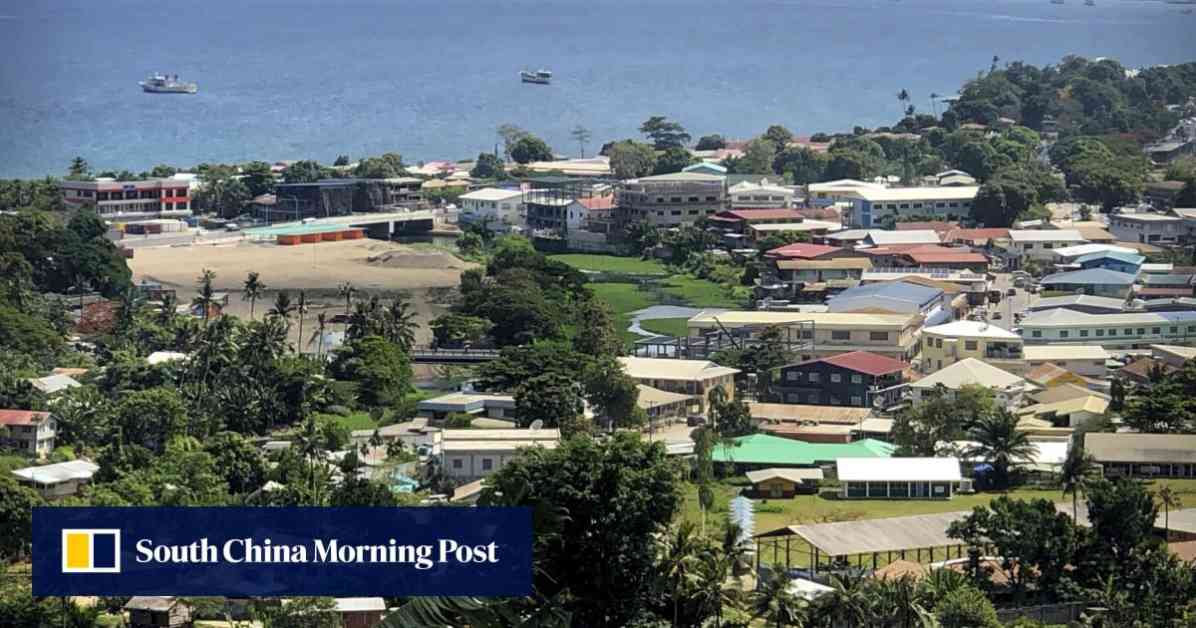Island nations scattered across the vast expanse of the Pacific Ocean find themselves at the epicenter of an escalating rivalry between two global superpowers – China and the United States. This power struggle for control over maritime routes, deepwater ports, and other strategic assets in the region has been dubbed by the Lowy Institute as a new “Great Game” reminiscent of the 19th-century competition for influence in Central Asia between the British Empire and Russia’s tsarist rulers.
The Pacific’s Strategic Importance
The Pacific region’s significance stems from its proximity to key shipping lanes and communication cables that criss-cross the ocean floor. In addition, the abundance of fisheries and seabed minerals in the area further fuels the rivalry between China and the US. However, it is the Pacific’s strategic maritime location between Asia, North America, and Australia that solidifies its position as a focal point for major powers’ defense strategies.
According to a report by the Lowy Institute, the geopolitical landscape of the Pacific is becoming increasingly crowded as multiple powers vie for influence in the region. China has been expanding its reach through diplomatic relations, infrastructure projects, and development finance, while traditional partners such as Australia and the US strive to maintain their influence.
Authors of the report, Mihai Sora, Jessica Collins, and Meg Keen, highlight the shifting dynamics in the Pacific, noting that China’s growing presence is reshaping the region’s geopolitical calculus. This transformation has significant implications for island nations in the Pacific, who have historically felt neglected by Western powers.
Rising Concerns and Challenges
While the newfound attention from global powers may bring economic opportunities to the Pacific, it also poses challenges to governance and transparency. The report warns that the strategic focus on the region could potentially lead to local political actors advancing narrow interests at the expense of the broader population’s well-being.
Moreover, the Pacific region is grappling with the adverse effects of climate change, including rising sea levels and extreme weather events. The aftermath of the COVID-19 pandemic has further exacerbated the challenges faced by Pacific nations, resulting in a lost decade of development.
China’s presence in the Pacific has grown significantly in recent years, with investments in development finance, infrastructure projects, and strategic sectors such as the military, policing, digital connectivity, and media. This expansion of China’s influence has raised concerns among Western nations and prompted a response to bolster security agreements with Pacific countries.
The US and its allies have also ramped up their engagement in the Pacific, establishing new embassies and diplomatic outposts in the region. Australia, in particular, has strengthened its presence in the Pacific by opening new diplomatic posts and maintaining a resident diplomatic presence in every sovereign Pacific nation.
Implications for the Pacific
The intensifying competition between China and the US in the Pacific has far-reaching implications for the region. China’s aggressive push for influence through loans, infrastructure investments, and diplomatic outreach has raised concerns about the erosion of Taiwan’s presence in the region.
In 2022, China signed a security pact with the Solomon Islands, triggering alarm among Western nations and prompting responses to bolster security agreements with other Pacific countries. Australia, for instance, signed an agreement with Tuvalu allowing its people to relocate to Australia in response to the impacts of climate change.
The rapid population growth and urbanization in Pacific nations are straining services and resources, leading to challenges in providing adequate education, healthcare, and employment opportunities. Papua New Guinea, for example, is expected to see its population double by 2050, further exacerbating the strain on infrastructure and social services.
Despite the influx of development aid and investments in the Pacific, concerns persist about the capacity of regional architecture and national systems to manage and coordinate the growing number of donors and projects in the region. The prevalence of corruption and elite capture of the state continue to hinder progress in addressing pressing issues in the Pacific.
In conclusion, the escalating rivalry between China and the US in the Pacific presents both opportunities and challenges for the region. While increased attention from global powers may bring economic benefits, it also raises concerns about governance, transparency, and long-term sustainability. The Pacific’s strategic importance as a crossroads of major powers’ defense strategies underscores the need for coordinated and sustainable development initiatives to ensure the well-being of its people and the preservation of its unique environment.



















